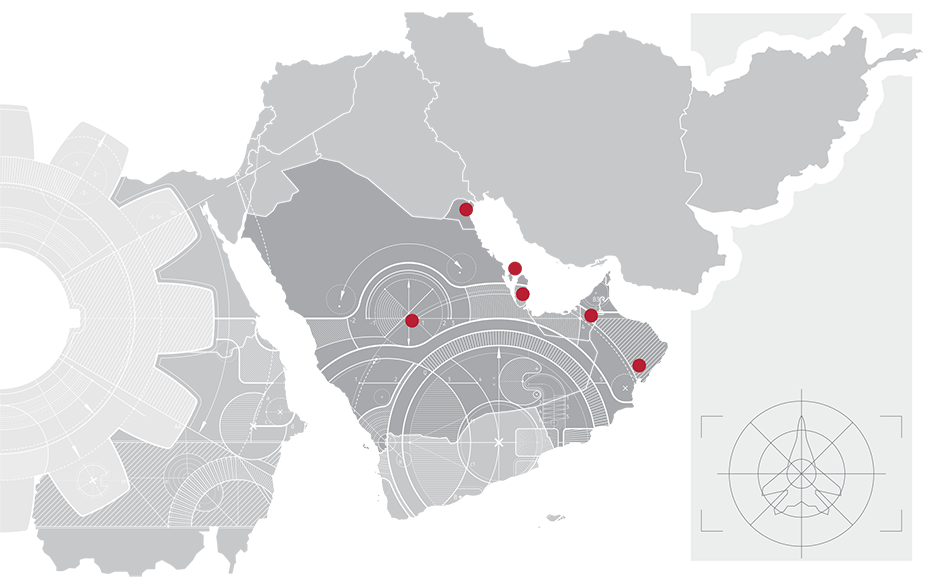{{item.title}}
{{item.text}}

{{item.title}}
{{item.text}}
In most countries, the defence ministry establishes control over military airworthiness, regulating the operating and technical domains of the airborne fleet to ensure defence operations, comply with safety standards, and minimize risks. These countries establish a national military airworthiness authority (MAA), similar to national civil aviation authorities. Armed forces in Gulf Cooperation Council (GCC)1 countries typically do not have this capability in place, but they should. Establishing an airworthiness authority will allow militaries to manage these air assets, reduce operating costs, tailor aircraft performance to the needs of their armed forces, and build up their national defence industry.
1. The GCC countries are Bahrain, Kuwait, Oman, Qatar, Saudi Arabia, and the United Arab Emirates.
In the civil sector, the International Civil Aviation Organization (ICAO) sets global safety guidelines. Individual countries, or groups of countries, then have a transportation authority that determines which standards to implement, and how. No global set of rules exists for military aviation, and each country regulates its own military air safety. Most European countries set up military airworthiness authorities (MAAs) in the 1990s, and some have undergone recent reforms — such as the U.K. in 2010. (Italy is a notable exception; its MAA dates back to 1923 and was reorganized in 1998.) MAAs perform a wide range of functions for the military aircraft in their armed forces:
European armed forces have started to recognize that aligning airworthiness standards across countries can save time and costs in maintaining and operating their military aircraft fleet. In 2008, the European Defence Agency launched a program to harmonize the European Military Airworthiness Regulations, with the goal of developing a common regulatory framework, certification processes, design codes, and other aspects.
In the absence of an MAA, GCC armed forces have relied on strong partnerships with aircraft original equipment manufacturers (OEMs). The OEMs tend to be extremely conservative. They typically set operational standards using a lowest-common-denominator approach because OEMs make decisions based on an industrial and economic analysis. Although this approach has guaranteed high safety standards for GCC armed forces, it has limited them in operational, financial, and industrial terms.
By contrast, countries that develop their own airworthiness capabilities are able to manage their own fleet. They can control, and sometimes reduce, their operating costs. These countries can tailor the performance requirements of aircraft to the unique operational needs of their armed forces and make their own determination of whether aircraft are fit for use, which can increase the number of aircraft available for missions. They establish their own procedures to certify aircraft as fit for flight and set their own qualification standards for manufacturers, maintenance organizations, training organizations, aircraft engineers, and technicians within each of these entities.
Along with gaining operational improvements by creating MAAs, GCC countries could capitalize on their relatively large defence budgets. Currently, these countries are among the largest buyers of defence equipment and services in the world.1 Yet because the GCC lacks a strong defence manufacturing base, most of that spending goes directly to OEMs, thereby leaving the region and perpetuating the current market dynamic of overdependence on foreign suppliers and underdevelopment of national defence industries. Establishing strong airworthiness capabilities can keep some of those funds at home and help develop a national defence industry. For example, the national MAA can certify domestic supply chains — including suppliers, processes, and employees — and ensure proper safety standards.
1. Stockholm International Peace Research Institute Military Expenditure Database.
Set the legal framework to institute and define the rules and responsibilities of the MAA. This gives the government regulatory authority to establish all aspects of airworthiness, such as maintenance, training, licensing.
Define and implement the operating model, including organization, staffing, skills, and technology. A critical aspect of the operating model is structuring how regulatory authority gets delegated from a strong central organization that sets overarching standards down to technicians and engineers on a base who have authority over specific aircraft under their control. In general, decision-making authority should be pushed to the lowest possible level, while still ensuring centralized control.
Design and implement the airworthiness regulatory framework. The MAA needs to provide specifics such as the number of hours required for a specific qualification level for a maintainer, how testing should be designed and administered, and similar factors.
Make use of existing expertise. Militaries can engage an international partner to build the skills of the military engineers and specialists. GCC militaries can also coordinate with the national civil aviation authority to extract lessons learned from the civil aviation sector.
Critically, GCC armed forces do not need to start from scratch. They should learn from the expertise of other countries that have established their own MAAs. For example, many maintenance and operational manuals exist in those markets, and governments have wellestablished military standards for certain procedures. GCC militaries should adapt those materials and processes to the national context, a far less daunting project than developing them from whole cloth.
GCC militaries have been able to operate without MAAs until now, but their overreliance on OEMs is likely unsustainable. By creating a military airworthiness capability, countries can adapt their military assets to their unique operational needs, improving operational performance and asset availability. They can also save time, reduce operational budgets, and use their high levels of military spending to help develop a national defence industry. Accomplishing all this does not call for radical innovation or risk. Rather, GCC militaries can follow the well-established paths of their counterparts in other countries. This is a rare opportunity to generate a wide range of benefits. GCC militaries should capitalize on it.



Menu